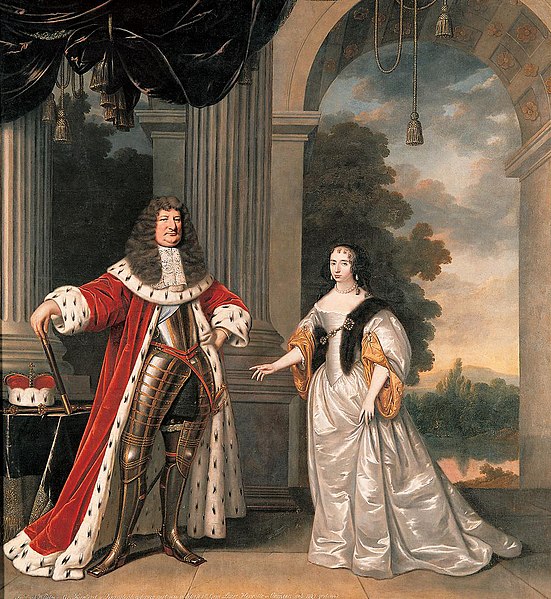Frederick II was the monarch of Prussia from 1740 until 1786. He was the last Hohenzollern monarch titled King in Prussia, declaring himself King of Prussia after annexing Royal Prussia from the Polish–Lithuanian Commonwealth in 1772. His most significant accomplishments include his military successes in the Silesian wars, his reorganisation of the Prussian Army, the First Partition of Poland, and his patronage of the arts and the Enlightenment. Prussia greatly increased its territories and became a major military power in Europe under his rule. He became known as Frederick the Great and was nicknamed "Old Fritz".
Portrait by Johann Georg Ziesenis (1763)
Portrait of 24-year-old Frederick as the crown prince of Prussia by Antoine Pesne (1736, Huis Doorn, Netherlands)
Frederick's marriage to Elisabeth Christine at Schloss Salzdahlum by J. G. Schmidt [de] (1733)
Rheinsberg Palace, Frederick's residence from 1736 to 1740
Prussia was a German state located on most of the North European Plain, also occupying southern and eastern regions. It formed the German Empire when it united the German states in 1871. It was de facto dissolved by an emergency decree transferring powers of the Prussian government to German Chancellor Franz von Papen in 1932 and de jure by an Allied decree in 1947. For centuries, the House of Hohenzollern ruled Prussia, expanding its size with the Prussian Army. Prussia, with its capital at Königsberg and then, when it became the Kingdom of Prussia in 1701, Berlin, decisively shaped the history of Germany.
Situation after the conquest in the late 13th century. Areas in purple under control of the Monastic State of the Teutonic Knights.
Prussian Homage by Jan Matejko. After admitting the dependence of Prussia to the Polish Crown, Albert of Prussia receives Ducal Prussia as a fief from King Sigismund I the Old of Poland in 1525.
The "Great Elector" and his wife
Frederick I, King in Prussia



![Frederick's marriage to Elisabeth Christine at Schloss Salzdahlum by J. G. Schmidt [de] (1733)](https://upload.wikimedia.org/wikipedia/commons/thumb/3/3c/Arolsen_Klebeband_15_259.jpg/640px-Arolsen_Klebeband_15_259.jpg)




